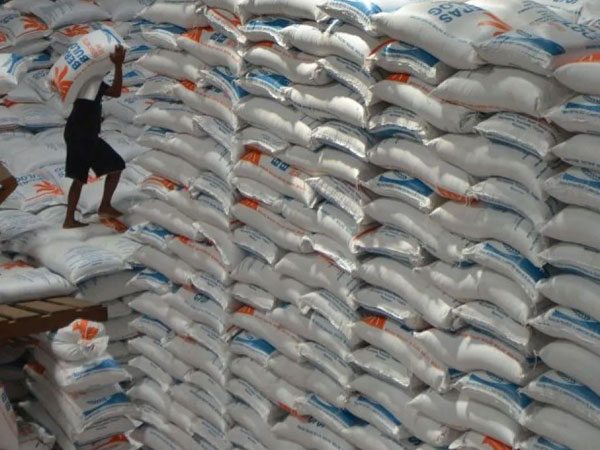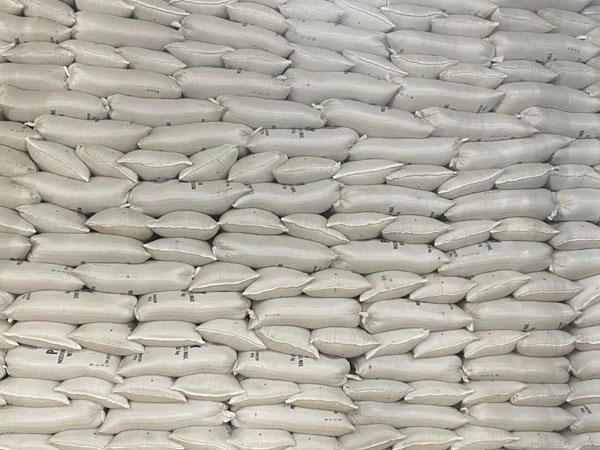THE Department of Agriculture (DA) on Wednesday laid out its proposed amendments to the Rice Tariffication Law (RTL), warning that the Philippines risks permanently weakening its own rice production capacity if the law remains unchanged.
During a hearing of the House Committee on Agriculture and Food, Agriculture Secretary Francisco Tiu Laurel Jr. presented the recommendations, which seek to restore regulatory powers to the National Food Authority (NFA), give the government more control over rice importation, and strengthen measures to stabilize supply and prices for consumers while ensuring better protection for local farmers.
Without these revisions, he said the RTL could cause “long-term harm to local rice production.”
Under the proposed changes, rice importation would be regulated by an Inter-Agency Council tasked with quarterly assessments of domestic and international trade trends. The council would determine the timing, volume, and variety of rice imports.
The DA chief said there is a need to tweak the country’s rice import strategies to prevent a glut, which pulls down farmgate prices.
Such a move is likened to the Sugar Regulatory Administration’s (SRA) current import system, wherein allocations for eligible entities are based on the raw sugar volume they purchased from local farmers at a premium price.
The initiative was part of the agency’s efforts to prop up farmgate prices of the sweetener as well as the income of cane farmers.
“Rice importation shouldn’t be arbitrary. Allocation for shipments would be provided after they buy local palay,” he said during the hearing on Committee on Agriculture and Food.
Local government units (LGUs) would also be prohibited from purchasing imported rice in domestic markets and instead be encouraged to buy directly from local farmers under the Sagip Saka Act.
Other proposals
The DA is pushing to restore the NFA’s regulatory authority, allowing it to register and maintain a national database of grain warehouses, conduct inspections, order seizures, impose administrative fines, and issue subpoenas. The agency would also regain the power to register, license, and collect fees from industry players.
The NFA would further be integrated into the Enforcement Group under the Anti-Agricultural Economic Sabotage Act to act against rice-related violations.
To ensure stable supply and prevent quality deterioration, the NFA would be mandated to dispose of one-fourth of its rice stocks every month while maintaining optimal buffer levels. This mechanism aims to reduce storage costs, replenish stocks regularly, and keep rice affordable for low-income consumers.
The proposal also requires maintaining at least nine days’ worth of rice inventory to sustain disaster relief programs and ensure food security during crises. NFA may also contract milling services from DA Rice Competitiveness Enhancement Fund (RCEF) recipients without public bidding.
Another key reform is the establishment of a palay floor price that reflects the actual buying price paid directly to individual farmers. This seeks to guarantee farmers fair compensation and shield them from market price manipulation.
The NFA would be given funding support to expand its personnel and modernize post-harvest facilities and logistics systems.
In addition, the proposal includes the establishment of a Rice Industry Development (RID) Office to coordinate all rice-related programs and policies. The RID Office would also serve as the secretariat of the Inter-Agency Council on Rice, overseeing import regulation, buffer stock management, and RCEF utilization.
The DA wants to put in place new priority programs under the RTL amendment, including Rice Quality and Safety Assurance Services to be implemented by the Bureau of Plant Industry (BPI), providing quality testing, food safety services, and farmer training, and the Expanded Crop Insurance Program, providing excess tariff revenues that would be used to support rice farmers under the Philippine Crop Insurance Corporation (PCIC).
The department also recommended adjustments in the allocation of the P9 billion annual RCEF budget, including greater flexibility for PhilMech in machinery distribution, inclusion of hauling trucks, and working capital assistance for beneficiaries of Rice Processing Systems and Fabrication, Repair, and Maintenance Centers.
Policy questions
Meanwhile, House Committee on Food Security Chairman Raymond Salceda (Albay, 3rd District) urged the restoration of the National Food Authority’s (NFA) power to buy palay using excess rice tariff revenues, as the panel began consolidating proposals to amend the Rice Tariffication Law.
“The simple policy question for Congress is this: Are we content with having no food security when it comes to rice?” Salceda said as he sponsored House Bill No. 48.
He explained that while rice tariffication aimed to lower prices, it also removed the NFA’s ability to shield farmers from market distortions. “The result is devastating—palay prices have collapsed, yet retail rice prices remain controlled by cartels,” he warned.
Salceda’s bill seeks to allow NFA to use rice tariff collections beyond the P10-billion Rice Competitiveness Enhancement Fund (RCEF) for palay procurement; provide a P10/kg top-up on its buying price; upgrade storage, drying, and logistics facilities; and establish a Rice Market Intervention Fund to stabilize both farmgate and retail prices.














© Copyright 2025 The SSResource Media.
All rights reserved.